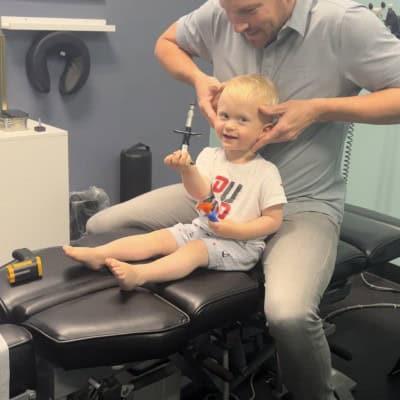If your child engages in repetitive behaviors like hand flapping, rocking, or vocalizing, you may wonder if it’s something to worry about. These actions, known as self-stimulatory behaviors or “stimming,” are common, especially among children with autism. While stimming often helps children self-regulate, it can also point to deeper neurological imbalances that deserve attention.
What Is Stimming?
Stimming includes repetitive movements, sounds, or behaviors that help children process overwhelming sensory input or express emotions. Common types of stimming include:
- Motor Stims: Hand flapping, rocking, spinning, pacing, or finger flicking.
- Vocal Stims: Repeating words or phrases (echolalia), humming, or making repetitive noises.
- Sensory Stims: Staring at lights, lining up objects, rubbing surfaces, or covering eyes or ears.
While all children engage in self-soothing behaviors, children with Autism Spectrum Disorder (ASD) often stim more frequently and intensely, making it a hallmark characteristic of autism.
Why Do Children Stim?
Stimming serves an important purpose. Research shows that stimming helps reduce anxiety and provides comfort, with 80% of adults with autism reporting that it helps them feel more regulated. For children with ASD, stimming is often a way to manage overwhelming sensory input or cope with stress. Understanding the “why” behind stimming allows parents to approach it with compassion and effective strategies.
The Neurological Roots of Stimming
To truly understand stimming, we need to look at its connection to the nervous system. Many autism-related challenges stem from an imbalance in the Autonomic Nervous System (ANS), which controls involuntary functions like heart rate, digestion, and emotional regulation. In children with autism, the ANS is often dysregulated, leading to:
- Overactive Sympathetic Nervous System (SNS): Triggers a constant “fight or flight” response, causing anxiety and sensory overload.
- Underactive Parasympathetic Nervous System (PNS): Reduces the ability to relax, self-regulate, and process sensory input.
This imbalance, known as dysautonomia, creates chronic stress and hyperarousal, making it difficult for children to self-regulate. Stimming often becomes a way for the nervous system to seek balance and relief.
The Role of the Vagus Nerve
The vagus nerve, a key player in nervous system regulation, helps promote calmness and emotional balance. In many children with autism, the vagus nerve is underactive or dysregulated due to:
- Subluxation: Spinal misalignments disrupting neural communication.
- Birth Trauma: Physical stress during birth affecting nervous system development.
- Environmental Stressors: Toxins, infections, or emotional stress impacting the ANS.
These factors contribute to a cycle of nervous system dysfunction, often referred to as the “Perfect Storm,” which can manifest as stimming and other sensory challenges.
Addressing Stimming at Its Root
Rather than trying to eliminate stimming behaviors, the focus should be on addressing the neurological imbalances causing them. Here are some ways to support your child:
- Modify the Environment
- Create a calm, predictable space.
- Reduce visual clutter, noise, and other sensory triggers.
- Use soft lighting and sensory-friendly textures.
- Teach Self-Regulation Skills
- Introduce deep breathing and mindfulness techniques.
- Encourage physical activities like jumping, swinging, or yoga.
- Provide sensory tools like fidget toys for self-soothing.
- Seek Neurologically-Focused Chiropractic Care
- Identify and correct subluxations affecting the nervous system.
- Use INSiGHT Scans to assess nervous system function.
- Restore balance through gentle, specific chiropractic adjustments.
A New Approach to Stimming
Stimming isn’t just a behavioral quirk—it’s a signal of deeper neurological patterns. By addressing the root causes of nervous system imbalance, we can help children with autism regulate more effectively, communicate better, and thrive.
If you’re ready to explore a neurological approach to stimming, consider working with a neurologically focused chiropractor. Every child deserves the opportunity to live with greater ease, joy, and connection—and we’re here to help make that possible.

